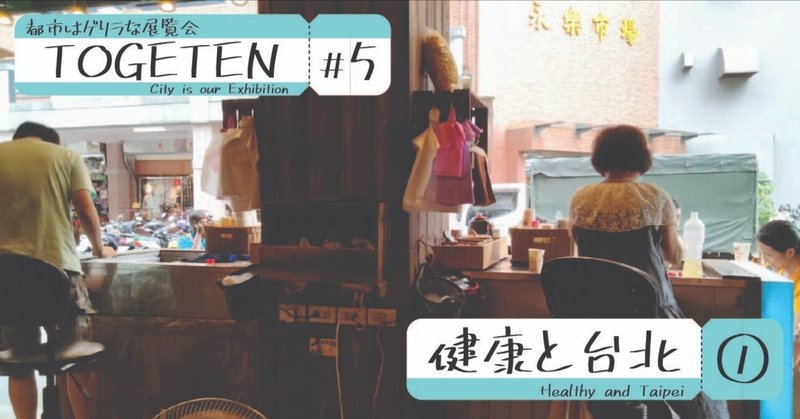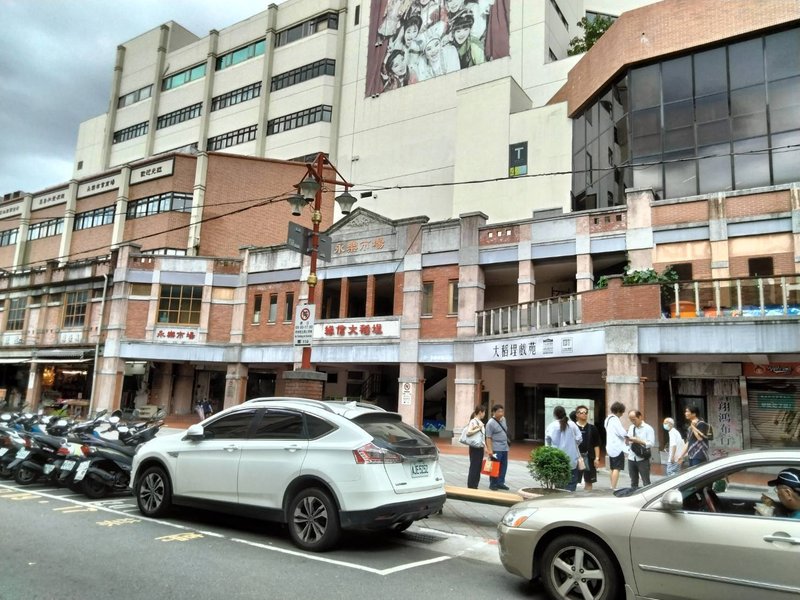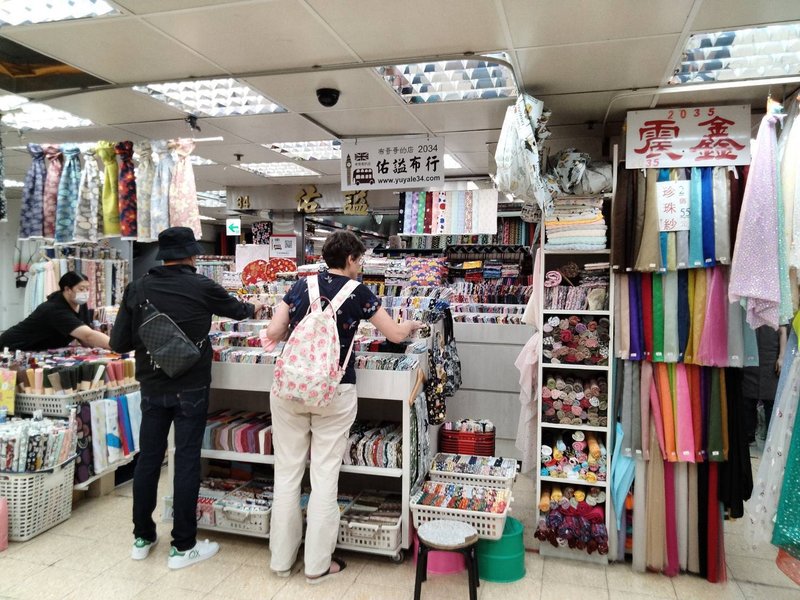
TOGETEN #5 健康と台北①(Healthy and Taipei①)
場所を少し変え、台北の中でも、歴史的なまちなみが残り続けているといわれる迪化街(ディーホアジェ、旧名大稻埕)の話をしたい。


この地域は、台湾が日本統治下の時代に、日本本土へ台湾製の製品を輸出するための貿易港として発展した町であった。また、台北でも商業地の中心として一定期間栄えた中心地であった。しかし、1960年代の商業的中心の東側への移行を経て、旧市街となり、今でもその街並みはその歴史性が評価され、残り続けている。
そして、この地域で有名なのが「お茶」と「香辛料」。迪化街に足を運び、一番最初に見えてきた食品と織物を扱う大規模な市場「永楽市場」が見えてきた。この永楽市場は、日本が迪化街を開拓する際に、都市の衛生状況の改善には、豊かな食・飲食機能を誘致する必要があるという考えから建てられた。現在でも、その機能は維持されており、永楽市場は、建て替えなどを経験した中でも、1階部分には食品施設が残り続けている。


また、迪化街の通りには、小商いなお茶屋がひしめき合っており、迪化街通りを歩いていても、お茶や香辛料、飲食店のお店が連続していた。 こんなにも、お茶屋や香辛料屋が大量に立ち並ぶようになったのは、台湾の人々の「健康意識」からだそう。お茶は、古来から中国では、一般飲料ではなく、クスリの代わりとしてずっと使用されてきた。TOGETEN#4でも説明したが、台湾の寺は医療的役割を持ち、クスリとしてお茶を処方するように寺の僧侶が処方箋を出していたため、その近隣にはお茶屋がひしめき合っていたそう。前回のサムネイルにした大稲埕慈聖宮は、迪化街にあるお寺であり、その前方にもお茶屋がびっしりであった。
大稲埕慈聖宮寺の南側の道路を挟んだのお茶屋で2種類のお茶を飲ませてもらった。一つは、比較的甘いお茶「青草茶」で、もう一つはこれまでに飲んだことないくらい苦い「苦茶」でした。店のおばあちゃんによると、苦茶は、肌や胃腸の若さを保つのにとても効くとのことで、おばあちゃんも案の定、一日に1L分ほど飲んでいるとのことで、よくこんなに苦いものを飲めるなと驚きだった。

迪化街に関しては、ハードの整備でも地域愛が感じることがあり、それはまた別の機会にまとめる。しかし、迪化街は、まちの人々の健康意識・衛生意識が寺や市場を中心に形成されていった興味深い地域であった。
ENGLISH
To talk another area. I will discuss “Dihua Street”. These buildings and streets have remained largely untouched.
During the time when Taiwan was colonised by Japan, this area was used as the central bay to export fabrics and food from Taiwan to Japan. Also, this centre became one of the biggest trade centres in Taiwan.
However, the downtown area moved to the east side of Taipei from there. Also, some commercial and industrial activities did too. This area retains old traditional stores and shops and is evaluated as one of the most traditional streets in Taiwan from all over the world.
By the way, the main products sold in this area are “Tea” and “Spice”. The first place I saw when visited this street was a very huge food and fabric market. It is called the “Yongle market”. This market was built by the Japanese military to maintain public health. They think they want to improve public health, we have to make opportunities and allow people to get something fresh. Also, something to eat and drink relates to human health the most. So, this market has a big grocery market on the ground floor.
While I was walking down this street, I found many types of tea and spice shops. The reason why this relates to Taiwanese health awareness. For a long time, people have been drinking tea to get healthier or cure diseases in Taiwan. As I write in TOGETEN #4, temples work as a hospital. And, the priest in the temple gives prescriptions written down names and types of tea. So, there are many tea shops around the temple. Around “Dadaocheng Cisheng Temple” located on Dihua Street used the Thumbnail of TOGETEN #4, there are many tea shops too.
Furthermore, I bought two types of tea at the shops near the street. Although one tea is a little sweet, the other is too bitter to drink. However, the woman of this shop’s owner told us that a bitter one was work to be anti-ageing and maintain your skin healthier. Also, she drinks 1 L of this bitter tea every day.
In short, Dihua Streets is an area formatted by a relationship with Health awareness. And, many people come there to be more healthy.
より健康と台北を知るためのtips
台北滞在中に参加したまちあるきツアー「島内散歩 Walk in Taiwan」
迪化街/大稻埕の昔のようすを手描き調で書いた地図
昔ながらのまちなみを思い起こしながらまちあるきをしたい人は必見!!
The map drawn the landscape old buildings and architects in Dihua Street.
孤独のグルメでも永楽市場や迪化街のグルメについて特集されてました
Japanese short drama introduces foods at Yongle market and Dihua Street.
ほかのTOGETENもぜひ!!Please read another story!!
この記事が気に入ったらサポートをしてみませんか?
